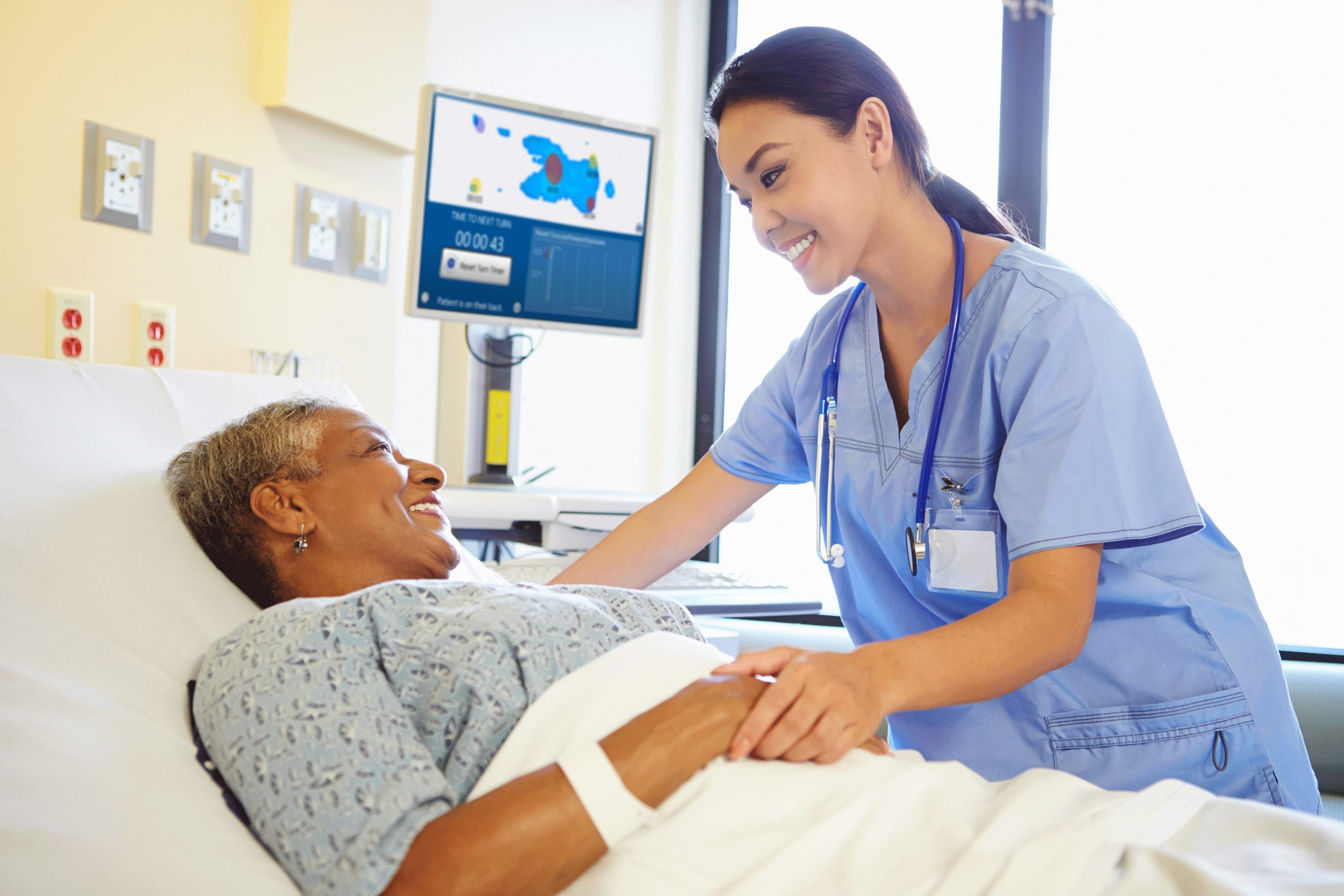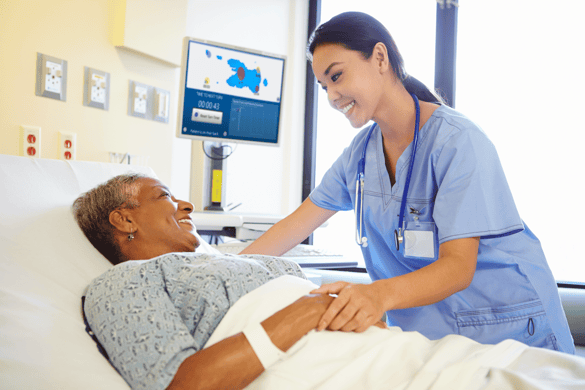
Taking the Guesswork Out of Patient Turning and Reducing Pressure Injury Workload
With the growth of AI and medical data, we can improve predictability of hospital acquired pressure injuries in order to extend the time to injury, or ideally avoid them altogether. This will enhance patient safety, reduce costs for the hospital, and improve the patient experience. Optimally, we apply data and innovative technology to alleviate the impact of HAPIs for caregivers and patients.
As a highly topical example of HAPIs: due to the current pandemic, the medical system is seeing a significant increase in patients with critical care needs. Patients that develop acute respiratory distress syndrome (ARDS) due to COVID-19 are typically placed on ventilators and lay in a prone position (face down) to help improve ventilation.
COVID-19 patients generally require longer hospital stays and round-the-clock care, and combined with everyday patient duties, staff are overworked and resources are strained. Extended proning can cause pressure injuries to develop on the face, introducing yet another challenge for medical staff to contend with.
Time is a critical factor in preventing pressure ulcers and deep tissue injury. Right now, medical professionals spend their valuable time on inefficient patient monitoring and turning — yet, the incidence of HAPIs remains high. Nor do they have insight into whether patients are experiencing elevated levels of pressure — or where — on their skin. Standard prevention strategies that include skin monitoring, offloading, and pressure redistribution are helpful, but are also time-consuming and difficult to prioritize based on need. With the help of pressure sensor technology, nurses can be more precise with their patient turning schedule, and prolong the time it takes for a pressure injury to occur.
In our example of sedated COVID-19 patients who are prone face down to assist with their breathing, moving them is a difficult challenge for the care team: “It’s incredibly difficult to do logistically,” said Amanda Owen, wound nurse specialist at Johns Hopkins Hospital. “It takes several people to flip them and then maintain their breathing.”
An intelligent mattress overlay system could identify risk areas that require clinical attention and precise visualizations can confirm successful repositioning. With remote patient monitoring capabilities, alerts, and a countdown clock, nurses can prioritize turning instead of regularly repositioning every patient. An overlay system offers greater precision and accuracy in patient turning, and nurses can comfortably rely on it to improve patient outcomes.
Nurses caring for COVID-19 patients could reduce the logistical challenges associated with turning patients in the prone position using an intelligent mattress overlay system.
Additionally, by saving valuable time on patients that don’t require preventative measures, nurses will have the ability to reallocate their efforts on where they’re needed most. They’ll save even more time as additional charting history is no longer required. If nurses can reduce the time spent on standard means of preventative care and their overall workload, particularly around pressure injuries, then they can focus on higher risk issues.
Pressure sensor technology not only serves an immediate need in extending the time to injury and reducing nurse workload, but combined with artificial intelligence and machine learning, offers a future capability for a hybrid approach to patient care.

How Artificial Intelligence and Machine Learning Helps Clinicians to Improve Patient Outcomes
Artificial intelligence and machine learning can be used to enhance and augment clinical workflows centred on pressure injury prevention and management.
In the short term, AI-powered algorithms can assist clinicians in maintaining healthy skin for at-risk patients. Visualizations confirm safe offloading and help provide individualized care. And with turn regimens automatically tracked, coupled with advanced reporting features, nurses’ workload is reduced.
By continuously monitoring skin pressure exposure and position tracking, machine learning can be applied to the collected data and over time, this information can be used to provide clinicians with actionable insights. Not only will AI and ML be able to predict pressure injuries before they happen, they will quickly help uncover anomalies in patients.
Right now, we are in the process of gathering data in order to train these models and then tune them after being deployed in clinical settings. Eventually, treatment plans will become optimized to minimize recovery time, and the best possible outcomes are achieved from both care and financial perspectives as a result.
References
- Moore, Z., Patton, D., Avsar, P., McEvoy, N. L., Curley, G., Budri, A., Nugent, L., Walsh, S., & O'Connor, T. (2020). Prevention of pressure ulcers among individuals cared for in the prone position: lessons for the COVID-19 emergency. Journal of wound care, 29(6), 312–320. https://doi.org/10.12968/jowc.2020.29.6.312
- Perrillat, A., Foletti, J. M., Lacagne, A. S., Guyot, L., & Graillon, N. (2020). Facial pressure ulcers in COVID-19 patients undergoing prone positioning: How to prevent an underestimated epidemic?. Journal of stomatology, oral and maxillofacial surgery, 121(4), 442–444. https://doi.org/10.1016/j.jormas.2020.06.008
- Rodriguez, A. (2020). “Bedsores kill over 60K people in the US each year. Amid COVID, experts worry more may be at risk”. USA TODAY.
